The Institute for Government has today published Whitehall Monitor 2014, which charts government in over 120 graphs. It shows what government looks like in 2014, how it has changed since 2010, and how transparent it is – but also some of the challenges it will face after the 2015 election. Here we highlight the six key lessons that any future government should draw from this data.
Departments need more stable leadership 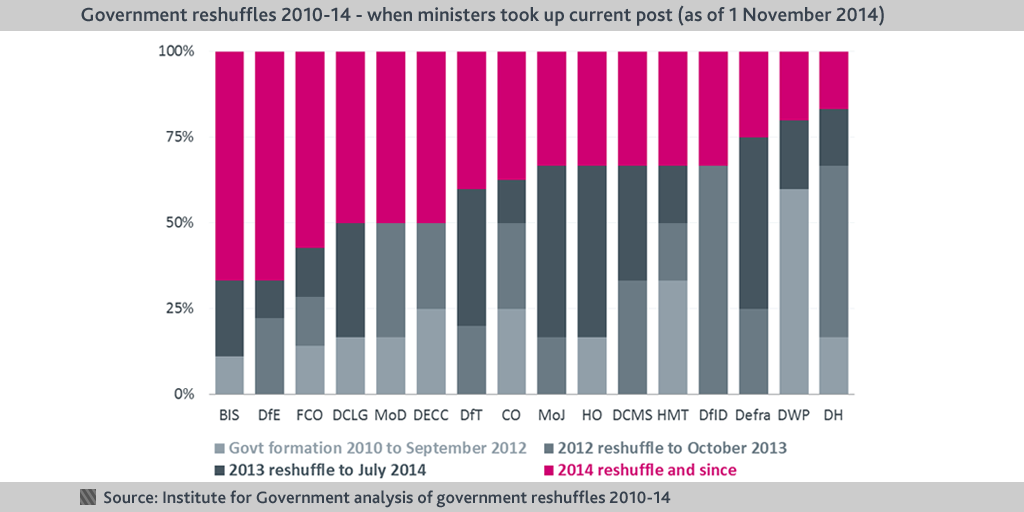
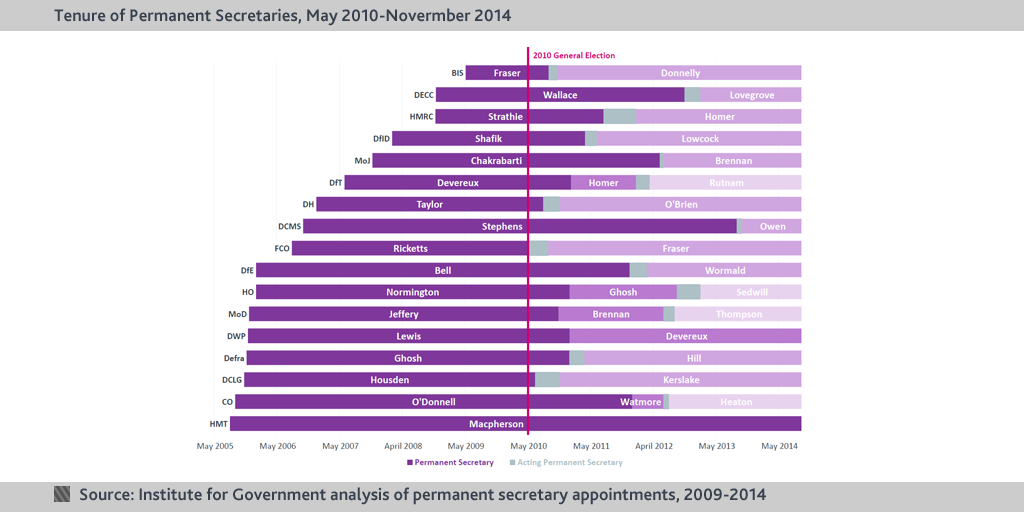
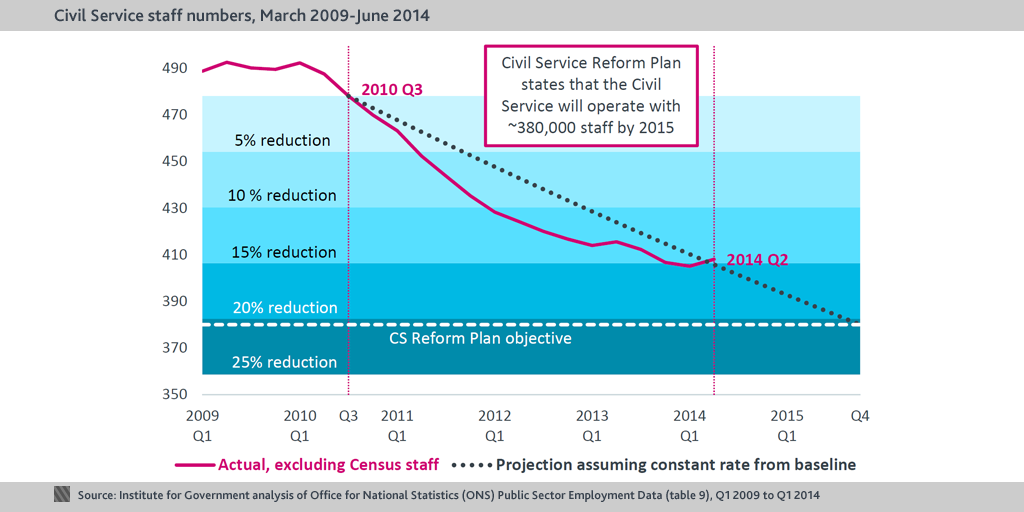
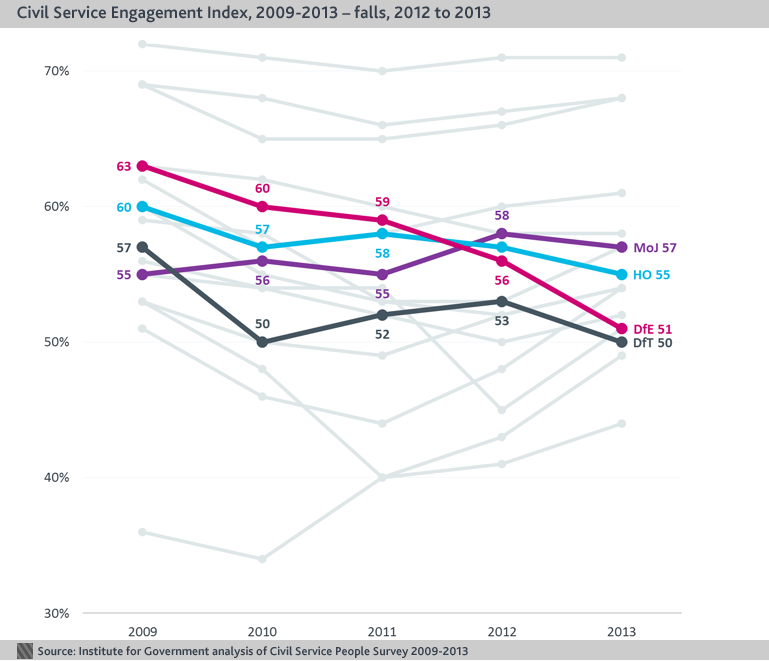
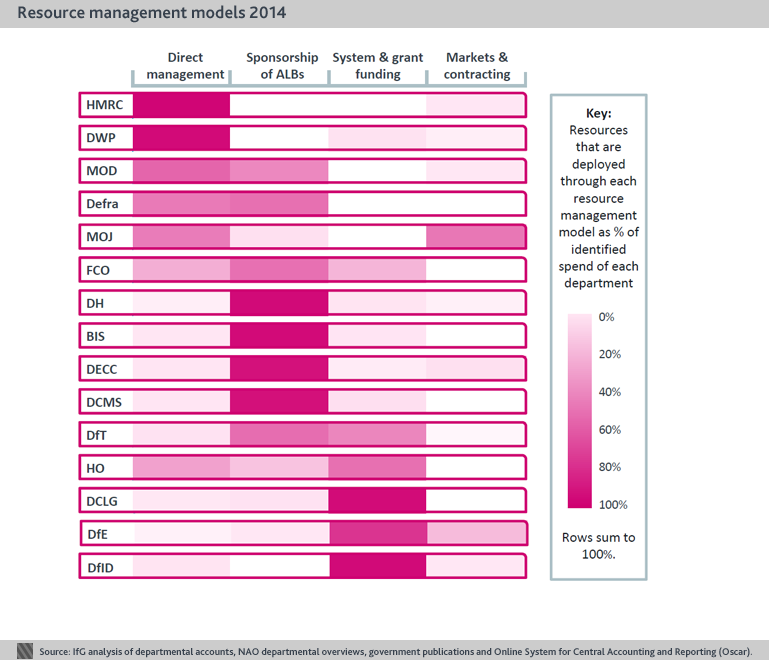
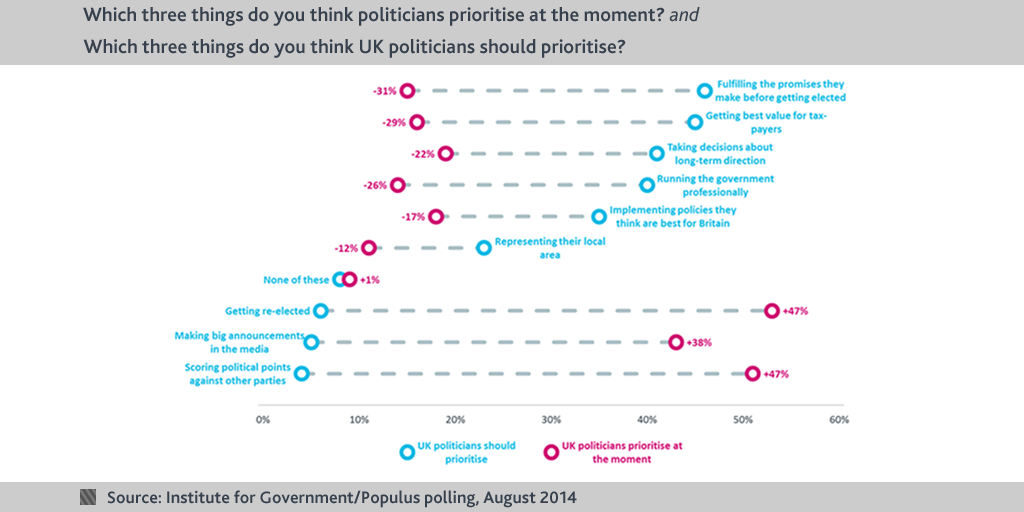
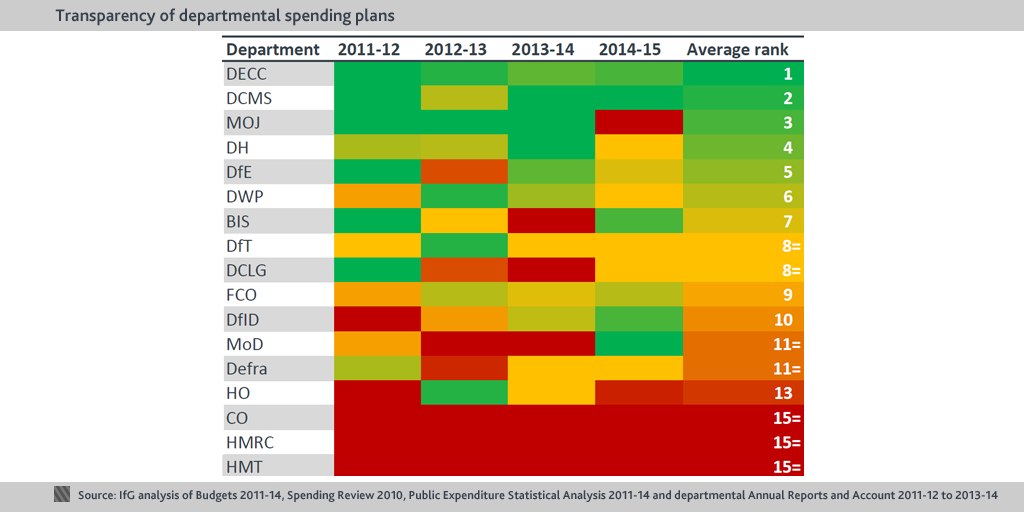
- Topic
- Civil service
- Administration
- Cameron-Clegg coalition government
- Tracker
- Whitehall Monitor
- Publisher
- Institute for Government